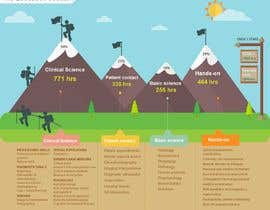The Partnership Between Posture And Pain In The Back: Methods For Preserving Proper Placement Throughout The Day
The Partnership Between Posture And Pain In The Back: Methods For Preserving Proper Placement Throughout The Day
Blog Article
Write-Up Written By-Fletcher McIntyre
Keeping appropriate pose isn't almost sitting up directly; it's about aligning your body in such a way that sustains your spinal column and lowers the threat of neck and back pain. The method you rest, stand, and move throughout the day can substantially impact your back wellness. But exactly how exactly can you guarantee great placement constantly, even throughout hectic days filled with numerous tasks? Allow's delve deeper into the subtle yet impactful adjustments you can make to your everyday routine to maintain your back happy and healthy and balanced.
Relevance of Correct Stance
Appropriate position is crucial in maintaining a healthy and balanced back and protecting against discomfort. When you sit or stand with great stance, your spinal column is in placement, decreasing pressure on your muscular tissues, tendons, and joints. This alignment permits the body to disperse weight evenly, protecting against excessive tension on specific locations that can lead to discomfort and discomfort. By keeping your back properly straightened, you can also boost your breathing and digestion, as slouching can press body organs and restrict their performance.
Additionally, keeping great posture can boost your overall look and self-confidence. When intergrative stand tall with your shoulders back and head held high, you exude self-confidence and appear more friendly. Good position can also make you really feel a lot more stimulated and alert, as it promotes proper blood flow and allows your muscle mass to work effectively.
Including proper pose into your day-to-day routine, whether sitting at a desk, walking, or working out, is important for stopping neck and back pain and advertising overall wellness. Bear in mind, a tiny modification in exactly how you hold yourself can make a significant distinction in how you feel and operate throughout the day.
Common Postural Mistakes
When it concerns preserving excellent pose, many people unconsciously make common blunders that can contribute to pain in the back and discomfort. Among the most common mistakes is slumping over or hunching over while sitting or standing. This placement places excessive pressure on the spine and can result in muscle discrepancies and discomfort in the future.
One more common error is overarching the reduced back, which can flatten the natural contour of the back and create pain. Additionally, crossing legs while sitting might really feel comfortable, but it can develop a discrepancy in the hips and hips, causing postural issues.
Making use of a pillow that's also soft or also solid while sleeping can likewise impact your positioning and add to neck and back pain. Last but not least, continuously craning your neck to consider displays or readjusting your setting frequently can stress the neck and shoulders. Bearing in mind these typical postural mistakes can aid you preserve far better placement and minimize the threat of back pain.
Tips for Correcting Positioning
To enhance your positioning and decrease pain in the back, it's vital to concentrate on making small changes throughout your daily routine. Start by bearing in mind your position. When resting, ensure your feet are flat on the flooring, your back is straight, and your shoulders are kicked back. Prevent slouching or leaning to one side. Use https://whoisachiropractor50594.dm-blog.com/32182866/combining-traditional-physical-treatment-with-cutting-edge-approaches-for-pain-in-the-back-relief-can-revolutionize-your-recovery-trip or pillows to support your reduced back.
When standing, disperse your weight equally on both feet, maintain your knees somewhat bent, and embed your pelvis. Engage your core muscles to sustain your spine. Take breaks to extend and walk around if you have a less active task. Incorporate workouts that strengthen your core and back muscles, such as slabs or bridges.
While resting, make use of a cushion that sustains the natural curve of your neck to preserve correct spinal placement. Stay clear of sleeping on your tummy, as it can strain your neck and back. By bearing in mind these suggestions and making small adjustments, you can progressively correct your positioning and reduce back pain.
Final thought
Remember, keeping good posture is vital to stop neck and back pain and promoting spine health. By bearing in mind your placement, distributing weight equally, and engaging your core muscle mass, you can lower strain on your back and minimize the danger of pain and injury. Include ergonomic support, take routine breaks to extend, and strengthen your core and back muscular tissues to maintain proper placement throughout the day. Your back will thanks for it!
